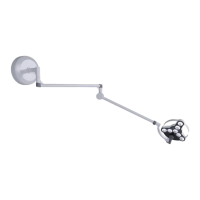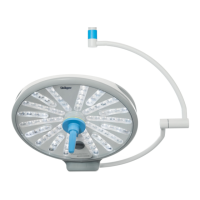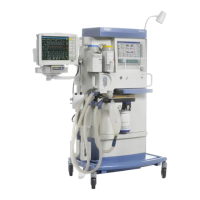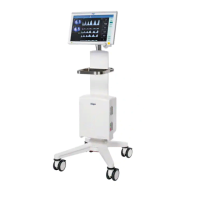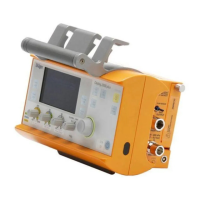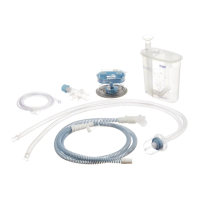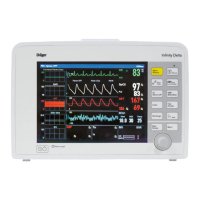Alarms
144 Instructions for use Perseus A500 SW 2.0n
Activating the alarms related to volume
The upper alarm limit for MV is deactivated at the
start of the ventilation, but can be set during the
ventilation. The upper alarm limit for VTi is
automatically set to 130 % of the set VT in volume-
controlled ventilation modes. In pressure-
controlled ventilation modes, it is deactivated at
the start of the ventilation, but can be set during
the ventilation.
The MV low alarm is delayed in certain cases and
is issued as follows:
– No sooner than 90 seconds after a case starts,
– No sooner than 60 seconds after changing to a
mode with greater respiratory support, see
page 259.
– No sooner than 60 seconds after an Apnea
(no flow) or Apnea (no pressure) alarm.
In volume-controlled ventilation modes, the alarm
limit for the inspiratory tidal volume is automatically
set to 130 % of the set tidal volume.
Resetting the Apnea (no CO2) alarm
When changing to a ventilation mode with higher
respiratory support, the Apnea (no CO
2) alarm is
reset. If the apnea situation persists, an alarm
appears after the time specified in the table "Alarm
delay and alarm escalation".
Alarm delay and alarm escalation
To prevent unnecessary alarms, some alarms are
not displayed immediately after a limit violation, but
after a delay. In addition, certain circumstances
can cause the alarm priority to change.
Alarm
Priority
Low Medium High
inCO
2 high
etCO
2 high
etCO
2 low
FiO
2 high
Inspiratory N
2O high
---
After two successive
respiratory phases
and 15 seconds
---
inAgent low
After two successive
respiratory phases
and 15 seconds
--- ---
FiO
2 low --- ---
After two successive
respiratory phases
and 15 seconds
or
after 30 seconds if no
respiratory phases are
detected
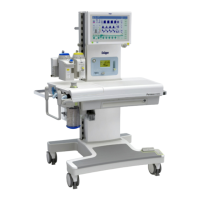
